Depending on application requirements, appropriately illuminating populated circuit boards (PCBs) for vision inspection can be challenging. PCBs are manufactured in a wide variety of sizes, shapes, finishes, colors, and with a whole host of different components, each with its own characteristics.
Each PCB may require multiple inspections per station, or potentially at multiple stations along the assembly process, due to of the variation in components and the type and number of inspections needed. Even relatively straight-forward presence/absence (PA) surface inspections can be difficult when inspecting PCBs, given all the variation.
If we examine a typical PCB, the most common PA inspections are of the board’s components and connector headers. Other inspections may include label and/or print and bar code OCR/OCV, as well as connector pin quality and orientation.
Verifying Component Presence in PCB Inspection
In the following inspection example, we are verifying the presence of a brass-colored metal screw holding the PCB in place on the base of a hard-drive disk.
Figure 1A illustrates an image taken with a typical vision system configuration using a coaxially mounted (on-axis) Ring Light. Upon examination, there are multiple difficulties in using this image for the inspection: whereas the human visual system can see that a screw is missing in the lower right portion of the board, the vision system software may be more challenged.

Figure 1A – PCB Illuminated Using Typical Machine Vision Setup

Figure 1B – High-Angle Lighting Technique
Because the board surface is coated and thus highly reflective, a high-angle lighting technique (Figure 1B) was deemed unsuitable for assessing specular reflective surfaces. This is due to the relationship of high-angle of incidence lighting on specular surfaces; since the angle of reflection is equal to the angle of incidence, high-angle lighting will reflect back directly into the camera, oftentimes obscuring surface detail. Ultimately, this lighting technique would not create feature-appropriate contrast for the intended inspection goal.
How might we improve on the high-angle lighting geometry given that the surface is specular? There are two useful full bright field lighting techniques for verifying the presence of the brass-colored screw: Diffuse Dome lighting or Coaxial Diffuse lighting (Figures 2A & 2B, respectively).

Figure 2A – Diffuse Dome Lighting Technique

Figure 2B – Coaxial Diffuse Lighting Technique
Figures 2C and 2D depict the image results of lighting the part in question using the Diffuse Dome Light and Coaxial Diffuse Light. Upon initial inspection, a broad spectrum white Diffuse Dome illumination pattern is more uniform when compared to the Coaxial Diffuse illumination technique. This makes it better suited for creating uniform scene lighting, primarily because Diffuse Dome Lights project light from multiple directions and angles of incidence.

Figure 2C – PCB Illuminated Using
DL097 Diffuse Dome Light

Figure 2C – PCB Illuminated Using
Coaxial Diffuse Light
However, upon closer examination of the Diffuse Dome image, we notice a difference in contrast: whereas there is some contrast difference in the upper right section of Figure 2C vs. the lower right (due to the presence of the screw), there is more pronounced contrast from the use of the Coaxial Diffuse Light, despite the poorer overall scene uniformity. Why is this? Can we combine the best features of both the Diffuse Dome and Coaxial Diffuse lights?
Adjusting Wavelength for Improved Image Contrast
The primary contrast differentiator between the screw tap and the surrounding green board is which color illumination is used; in this case, the board is green, but the screw pads are copper-colored. Based on our understanding of relationships on a color wheel of absorption vs. reflectivity (see “Color Application in Machine Vision” for more information), we can infer that the red Coaxial Diffuse Light was more effective in enhancing copper red on the green background than the broad-spectrum white Diffuse Dome Light (as illustrated in Figure 2C). We also tested the use of a red Diffuse Dome Light to improve image contrast, demonstrated in Figure 2E.
However, are other color lighting options better suited to different inspections on this PCB? Or perhaps different light techniques altogether?
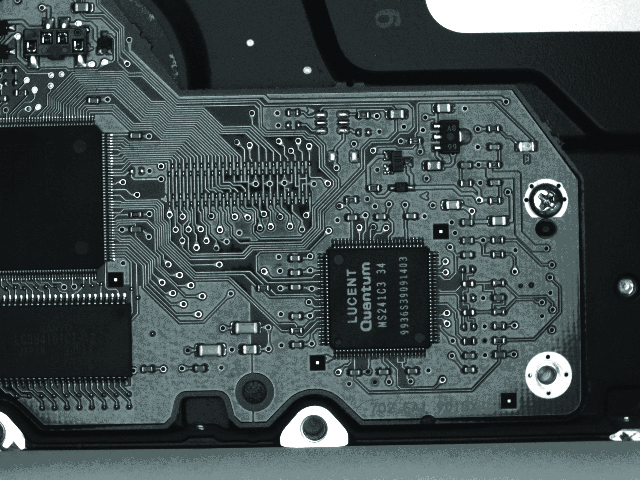
Figure 2E – PCB Illuminated Using Red DL097 Diffuse Dome Light
A blue Diffuse Dome Light differentiates the board surface traces better than red (Figure 3A), but as we might expect, less effectively than green (Figure 3B). Therefore, we can then remain confident that a Diffuse Dome offers feature-appropriate contrast for the screw PA and also some trace inspection at this station. However, to accomplish both inspections from this station would require a change in illumination color. How might we work around this obstacle?

Figure 3A – PCB Illuminated Using Blue
DL097 Diffuse Dome Light

Figure 3B – PCB Illuminated Using Green
DL097 Diffuse Dome Light
A potential solution in this instance is to utilize an RGB Diffuse Dome (Figure 3C), such as the DL097-RGB and a compatible multi-channel controller. The DCS-100E allows fully independent 3-channel control from the GUI application, a web browser interface, or through serial terminal commands via UDP and the Ethernet connection.
In this fashion, each specific color projection and an image grab can be cycled quickly at the same station. This includes white for color applications, minimizing the need for multiple single-inspection stations and their associated complexity, implementation time, materials, and manpower costs.

Figure 3C – PCB Illuminated Using RGB DL097 Diffuse Dome Light
Additional Inspection Challenges: Spatial Restrictions
Another relatively common obstacle when using a Diffuse Dome Light is the requirement for the light and camera to be in close proximity to the object of interest (see Figure 2A). Furthermore, this geometry configuration is not always optimal for either ergonomic or access considerations.
A Flat Diffuse Light, such as the FD0808 (Figure 3D) is effective for illuminating the PCB from a longer working distance, while still offering Dome-like illumination, and thus also affording better near-object access for such activities as pick-and-place robotics and/or person-in-the-loop operations.
Another typical PCB inspection is verifying connector block pin location/orientation and counts, as well as label bar codes and OCV/OCR. The challenge is to illuminate the pins uniquely, making them stand out against the background. We also notice upon review of the images taken with the previous techniques, while diffuse techniques work well for the board surface inspections, they may not be adequate for inspecting pins (Figures 4A & 4B).
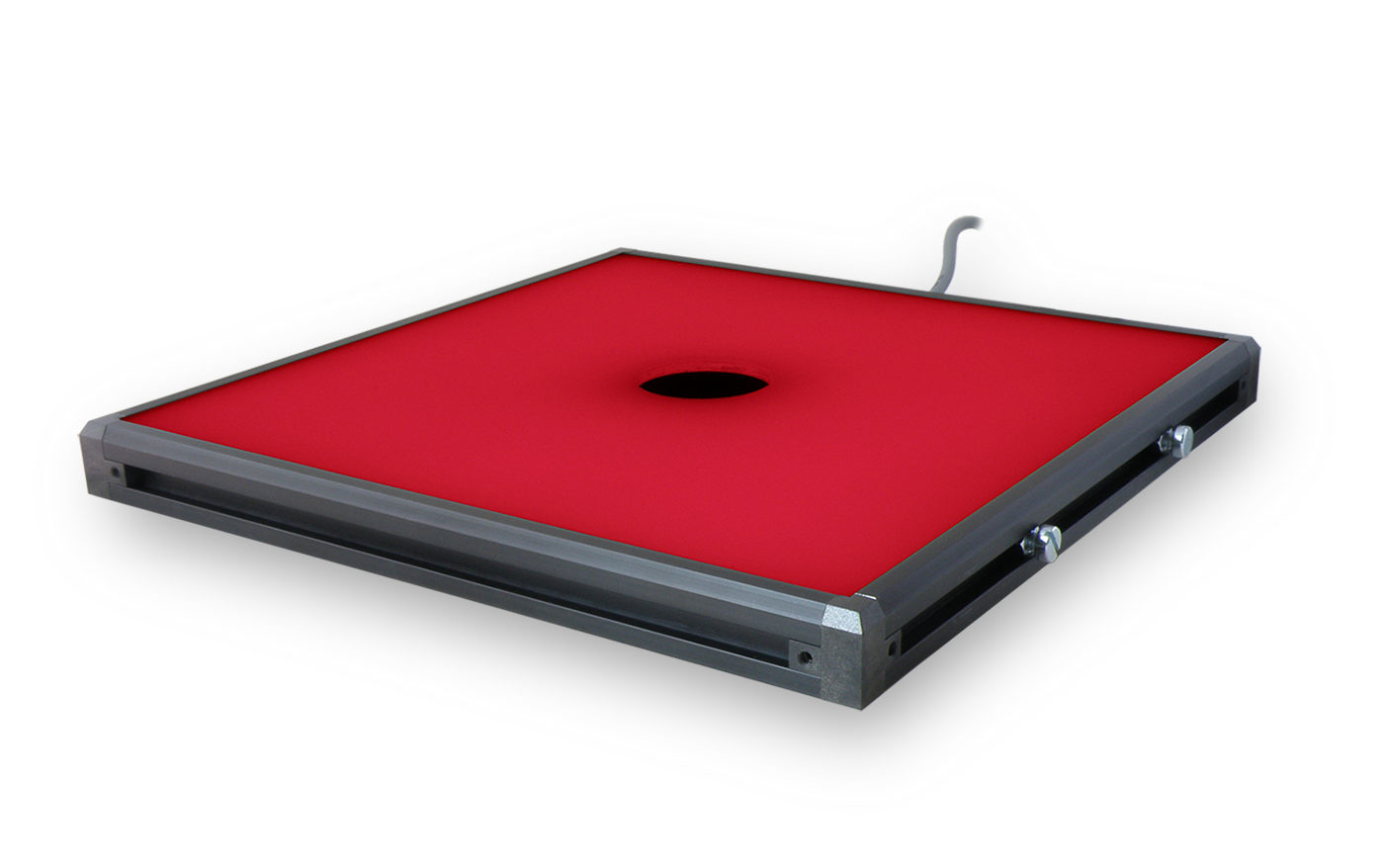
Figure 3D – FD0808 Flat Diffuse Light

Figure 4A – Pin Block Illuminated Using
DL097 Diffuse Dome Light
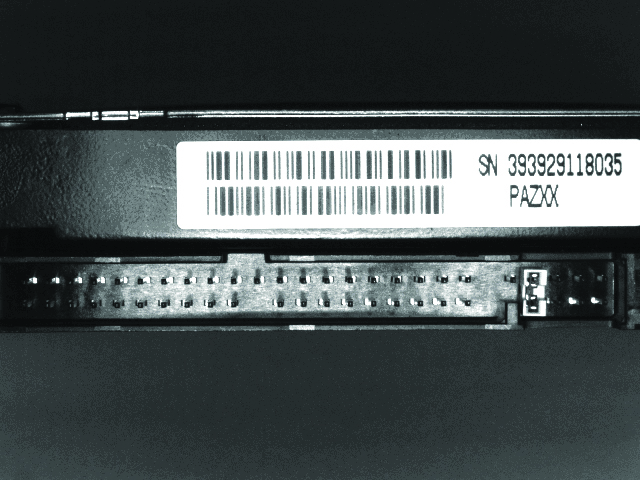
Figure 4B – Pin Block Illuminated Using
Coaxial Diffuse Light
It is also particularly challenging to inspect pins as they are typically recessed into the block or at right angles to the board face. An effective lighting technique for this application is low angle dark field, which can be circular (Figure 4C) or linear (Figure 4D).

Figure 4C – Pin Block Illuminated Using
DF241 Dark Field Ring Light

Figure 4D – Pin Block Illuminated Using Low Angle
Dark Field Lighting Technique
If we examine the images more closely, we see that whereas the Coaxial Diffuse Light illuminates the label well (see Figure 4B), it is largely ineffective for uniquely lighting the pins against their background. The low angle techniques are very effective for pin count location, as well as PA of bent pins, which would either show up out of the expected position, reflect differently, or perhaps be missing altogether.
One common obstacle to using any diffuse or circular dark field lighting technique is that the light must be positioned directly above, and relatively close to, the features of interest – in turn blocking potential part access by personnel or robots (as alluded to earlier).
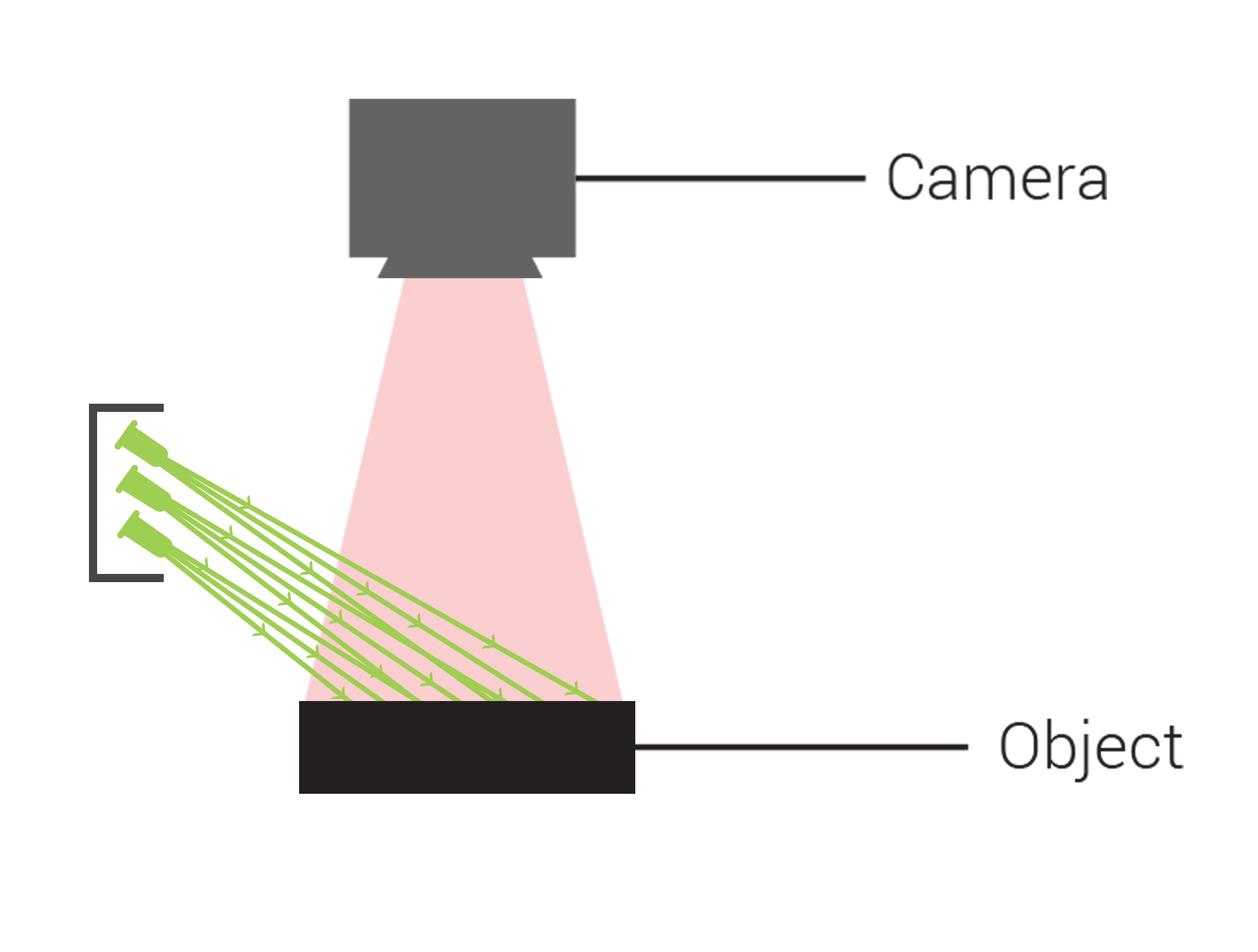
Figure 4E – BALA Angled Linear Array Lighting Technique
Unique to Advanced illumination

Figure 4F – AL150 BALA Lights
The use of a BALA (Broad Angle Linear Array) Light provides a solution, allowing for illumination of the pin block from the side (Figures 4E & 4F). Although the pin contrast using the BALA Linear Array is not as intense, this technique is more effective for illuminating the label in the inspection application. Thus, this approach offers dual advantages in this application: part access flexibility and a more efficient use of the system resources, achieved by mounting the light to the side and permitting two inspections from one image.

Figure 5A – Pin Block Illuminated at 30* Angle
from 18″ Working Distance
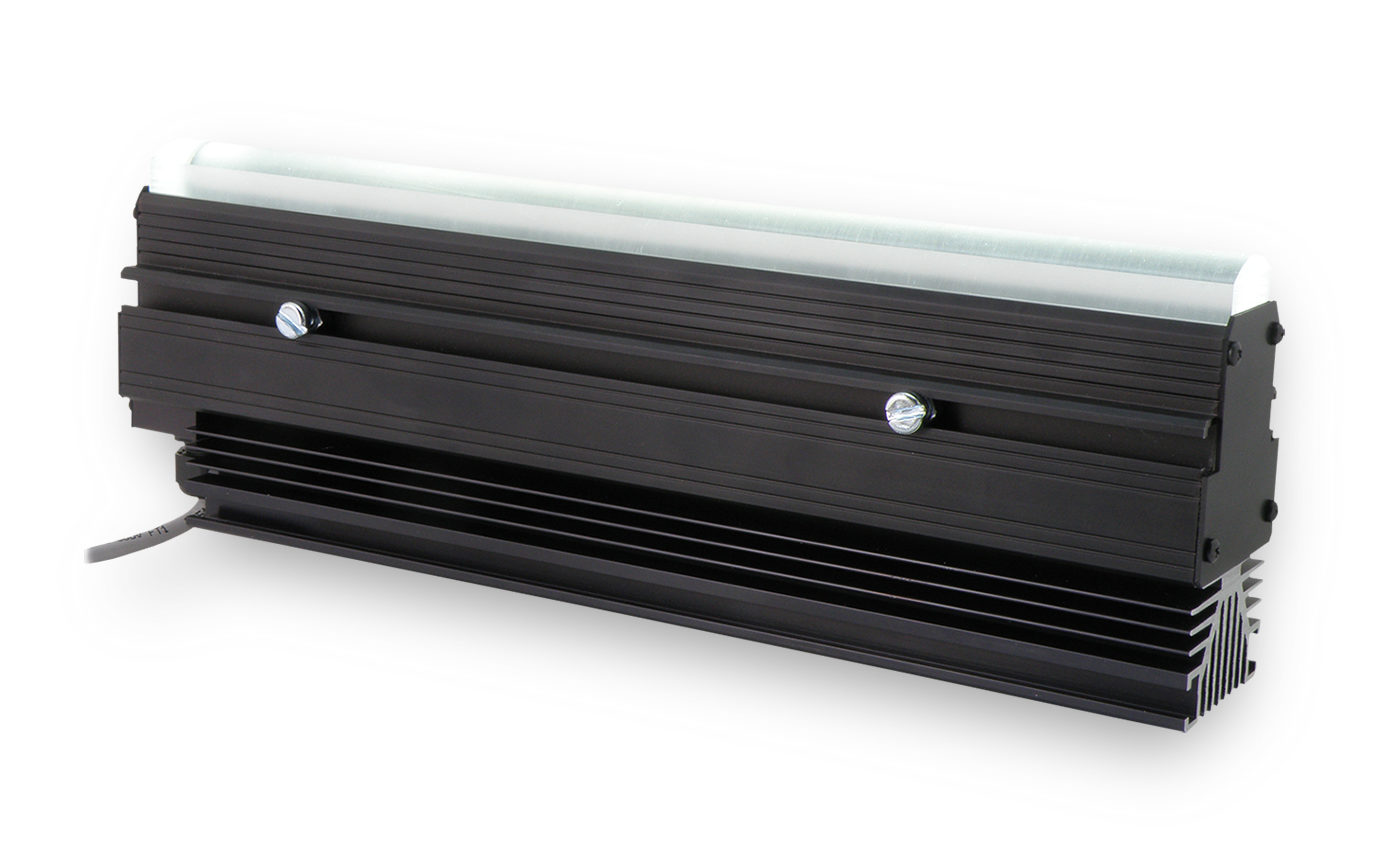
Figure 5B – LL137 Medium Intensity Line Light
Finally, the angled side lighting technique can also be deployed from longer working distances by utilizing the more intense linear, focused LL137 Line Light from Ai (Figures 5A & 5B).
This is also achieved by deploying the high-intensity and small-footprint AL295 MicroBrite Bar Light (Figure 6), particularly beneficial when more part access flexibility is needed.
The unique variability in component and surface characteristics of PCBs make them particularly difficult to inspect in automated machine vision systems. However, by adjusting lighting geometry, wavelength, and intensity, you can find the ideal lighting solution to achieve appropriate image contrast.
Do you have a PCB inspection application and are struggling with adequate illumination? Contact our team today.
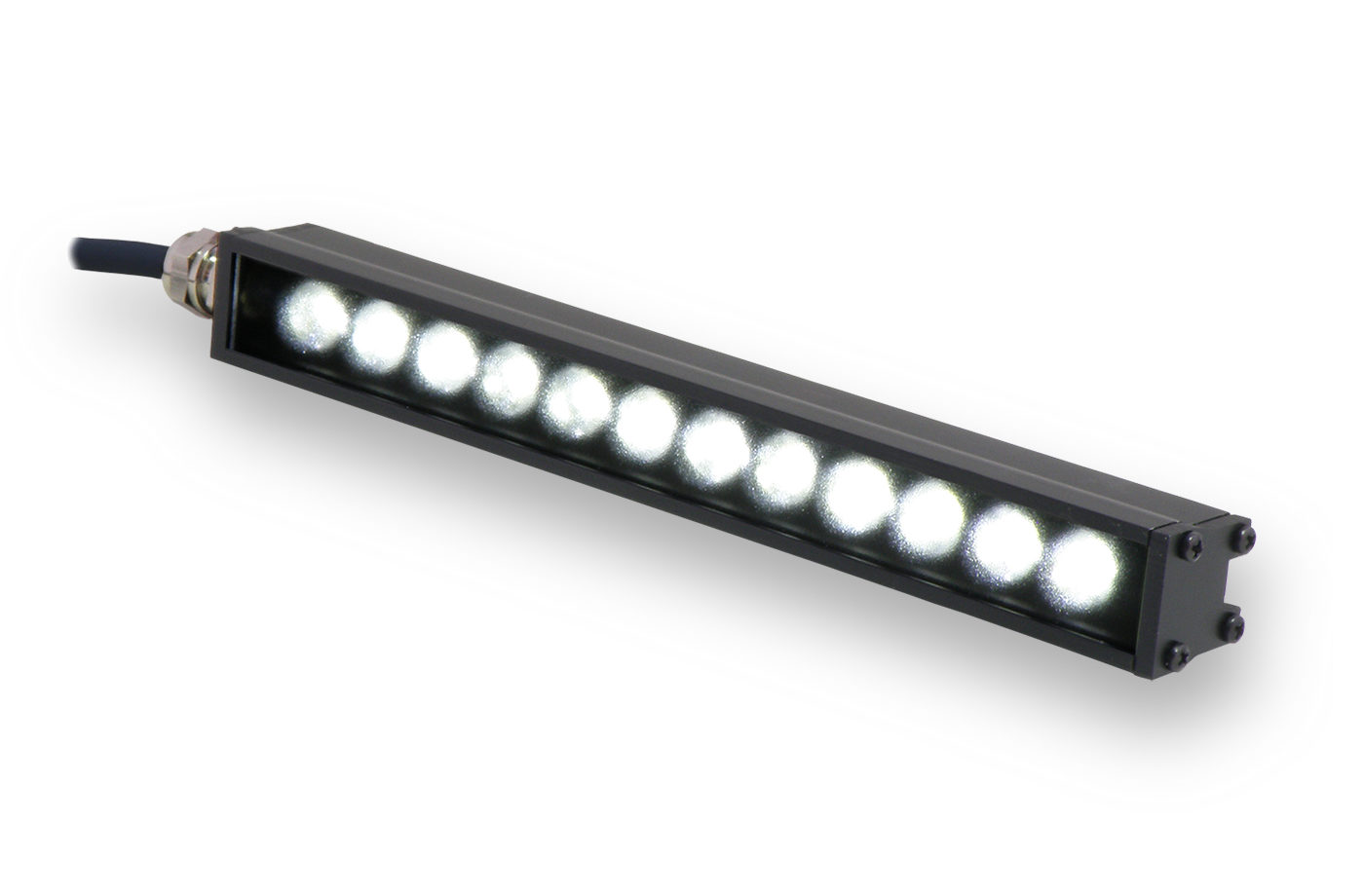
Figure 6 – AL295 MicroBrite Bar Light
